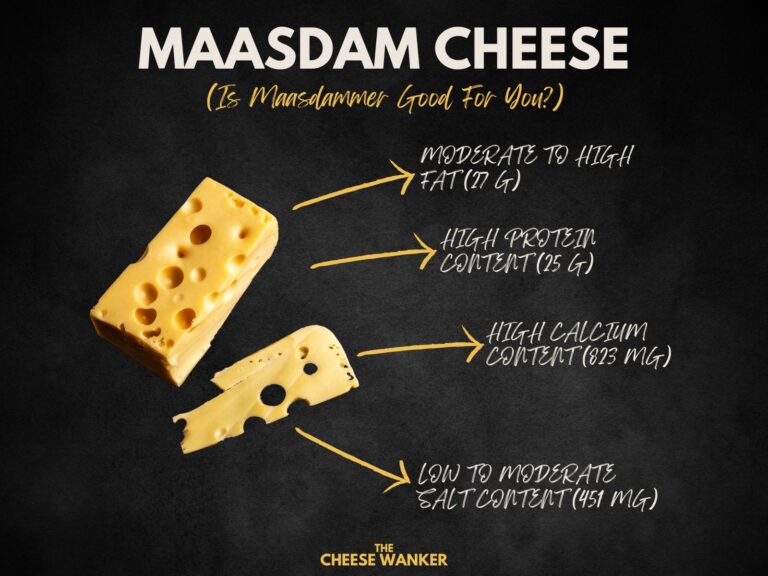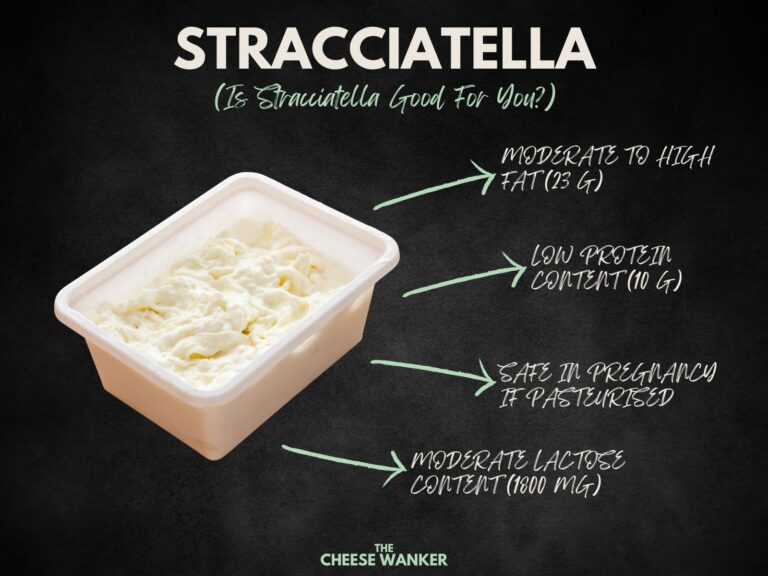Cambozola cheese, a delightful fusion of Camembert and Gorgonzola, has captivated cheese connoisseurs worldwide with its unique taste and creamy texture. In this article, we delve into the nutrition facts for Cambozola. Read on to find out if it is a healthy choice.
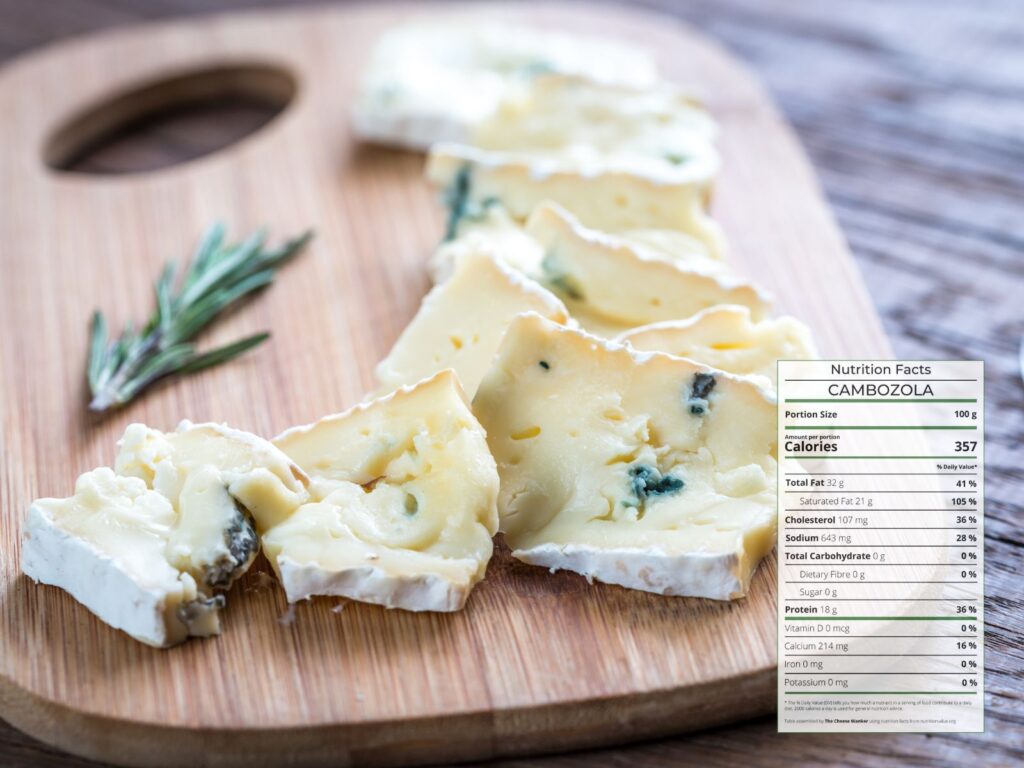
SEE ALSO: Nutrition facts for popular world cheeses in The Cheese Wanker’s index →
What is Cambozola?
Cambozola is a type of cheese that combines the characteristics of two well-known varieties: Camembert and Gorgonzola. It originates from Germany and is renowned for its unique and indulgent flavour profile.
This cheese is often described as creamy and rich. Moreover, its taste features the mild, buttery notes of Camembert and the distinctive tang and blue mould veins of Gorgonzola.
Without a doubt, this cheese is a favourite among cheese enthusiasts and is often enjoyed on its own or as part of a cheeseboard. It can also be used in various culinary applications, such as salads, pasta dishes, or melted on bread.
Nutrition fact sheet
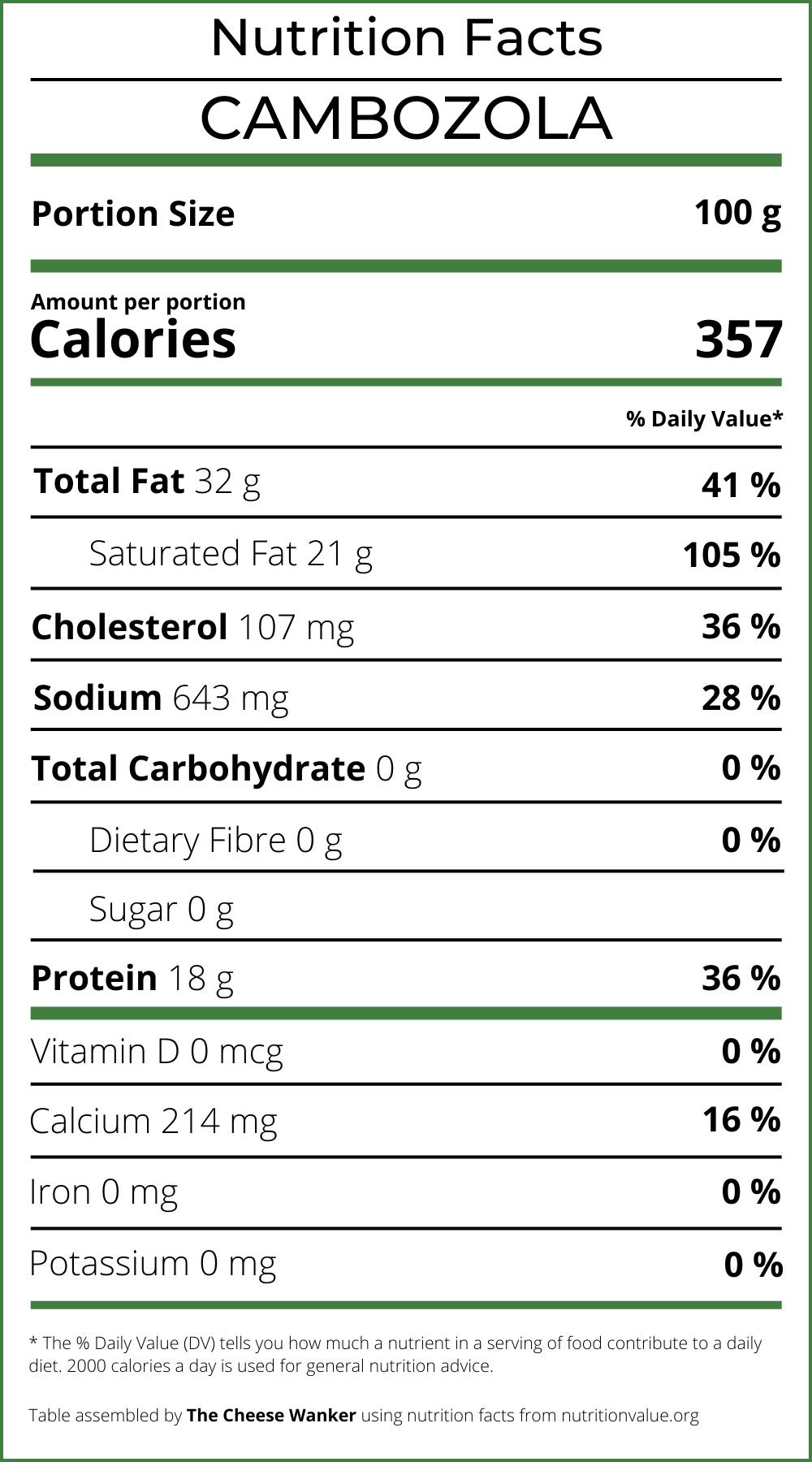
Nutritional review for Cambozola
Eating healthy plays a pivotal role in maintaining overall well-being and preventing chronic diseases. A balanced and nutritious diet provides our bodies with essential vitamins, minerals, and macronutrients, fuelling optimal physical and cognitive function.
With this in mind, let’s have a look at some of the key nutrition facts for Cambozola.
Lactose Intolerance
Lactose intolerance varies among individuals, and Cambozola, like many other cheeses, contains minimal lactose.
While some lactose-intolerant individuals might tolerate it well, others may experience discomfort. The best advice for those with lactose intolerance is to monitor their body’s response, as tolerance levels vary.
Fat Content
Next, let’s take a look at Cambozola’s fat content. Each 100 g serve of this decadent blue cheese will set you back by 32 g of fat.
Moreover, Cambozola’s fat content predominantly comprises of saturated and monounsaturated fats. Undoubtedly, these fats contribute to its creamy texture and delectable taste.
However, moderation is key, as excessive saturated fat intake may contribute to cardiovascular health concerns.
You can learn more about the different types of fat in cheese and which cheeses have the lowest fat content here.
Cholesterol Content
Contrary to common belief, dietary cholesterol isn’t inherently bad for most people. And this is good news because Cambozola is quite high in cholesterol. Indeed, a 100 g serve will contribute 107 mg (36% of Daily Value) of total cholesterol to your daily intake.
Indeed, the impact on blood cholesterol levels varies between individuals. It is essential to maintain a balanced diet and consider individual health factors when enjoying this cheese.
Protein Content
Cambozola not only tantalises the taste buds with its creamy and tangy blend but also offers a significant protein punch. Protein is an essential macronutrient that plays a crucial role in various physiological functions within the human body.
The primary protein found in Cambozola is casein, a high-quality protein commonly found in dairy products. Casein is valued for its complete amino acid profile, meaning it contains all the essential amino acids necessary for the body’s growth, repair, and overall health.
Including Cambozola in your diet can be an enjoyable way to boost your daily protein intake. Whether as part of a cheese platter, incorporated into salads, or melted onto a hearty sandwich, this cheese provides a delectable source of protein that can complement various meals.
Want to find out which cheeses have the highest protein content? Click here for our blog post covering cheeses with the highest protein content.
Safety in Pregnancy
Pregnancy is a time when dietary choices become especially critical for the health and well-being of both the expectant mother and her developing foetus.
Cambozola is often discouraged during pregnancy primarily because of its high moisture content and the presence of both white mould rind and blue mould veins. These factors can create an environment that is conducive to the growth of harmful bacteria, such as Listeria monocytogenes.
Of course, if you’re unsure of what you can eat during pregnancy, you should consult your healthcare professional to get a personalised plan. You can read more about which cheeses you can eat when you’re pregnant by clicking here.
Salt Content
The delightful savoury taste of Cambozola is a result of its sodium content. While a touch of salt can enhance the flavour of this cheese, consuming it in excess can lead to health problems, particularly if it’s part of a diet high in sodium from other sources.
In 100 grams of Cambozola, there is a notable 643 milligrams of sodium, which should be carefully considered, especially for individuals who are sensitive to sodium or at risk of certain health conditions.
You can read more about why salt is important in cheesemaking in our comprehensive post here.
Calcium Content
Calcium is an essential mineral crucial for maintaining strong bones and teeth, muscle function, nerve transmission and blood clotting. While Cambozola is often lauded for its rich and indulgent flavour, it also offers a notable contribution to your daily calcium intake.
In a 100-gram serving of Cambozola , you’ll find a significant amount of calcium, typically ranging from 200 to 300 milligrams.
This makes it a valuable source of this essential mineral, especially for individuals who may have dietary restrictions or lactose intolerance that limit their consumption of traditional dairy products.
Get our complete guide to calcium content in cheese in this post here.
Conclusion
Cambozola offers a tantalising blend of flavours, but its nutritional profile warrants careful consideration.
While it can be a source of protein and calcium, individuals must be mindful of its fat, sodium and cholesterol content. Moreover, pregnant women should exercise caution when indulging in this delectable cheese.
Understanding Cambozola’s nutritional facts allows us to enjoy its unique taste while maintaining a balanced and health-conscious diet.
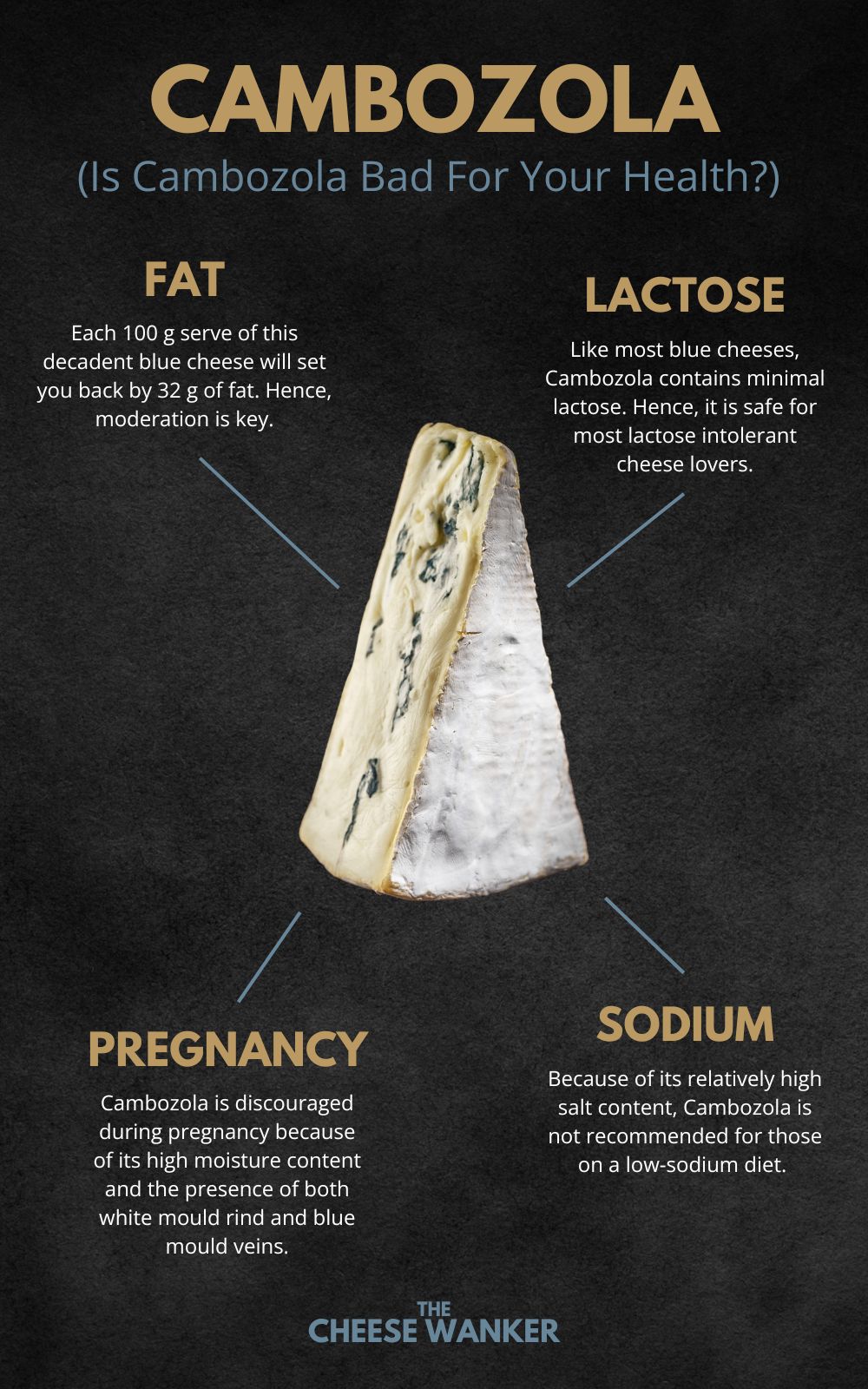
References
All the advice relating to what cheeses you can eat during pregnancy in this article is based on the recommendations by health authorities in Australia, the UK and the USA. If you are unsure about what you can or cannot eat, please consult your doctor.
Australia – FSANZ
United Kingdom – NHS
United Sates of America – FDA

